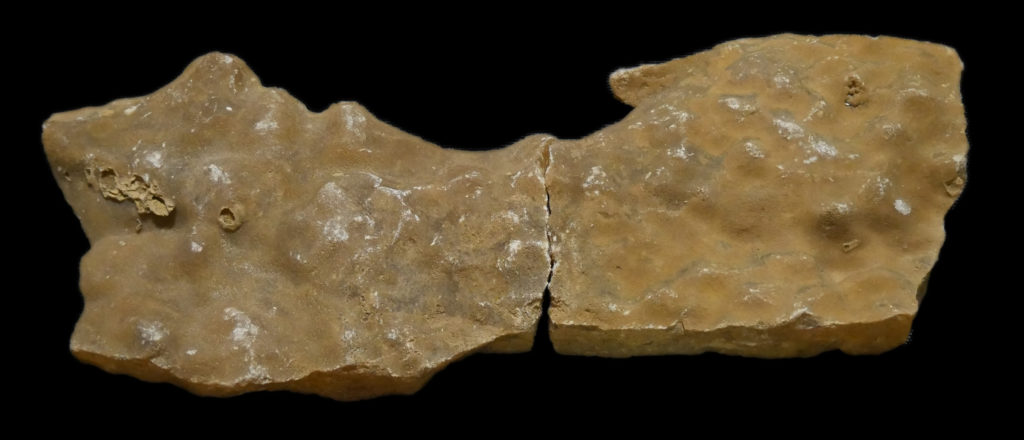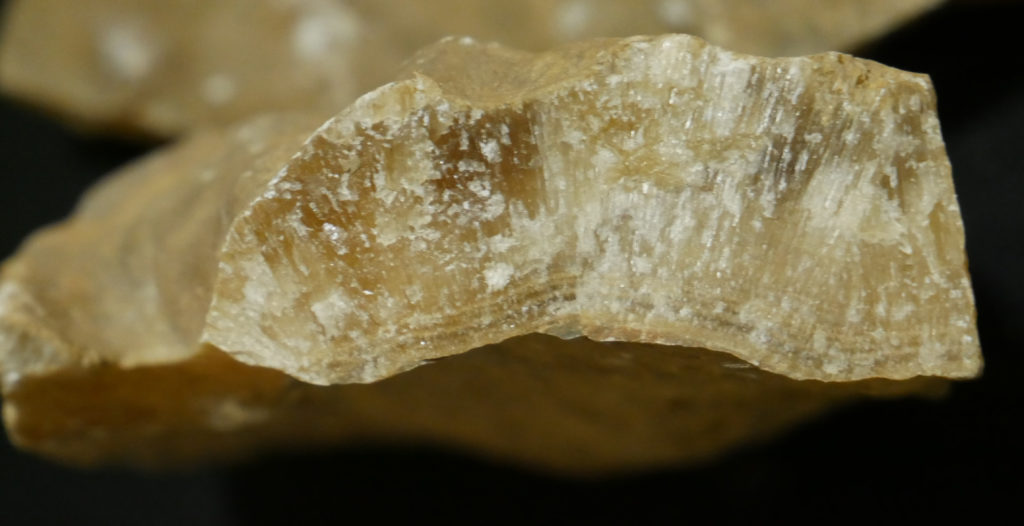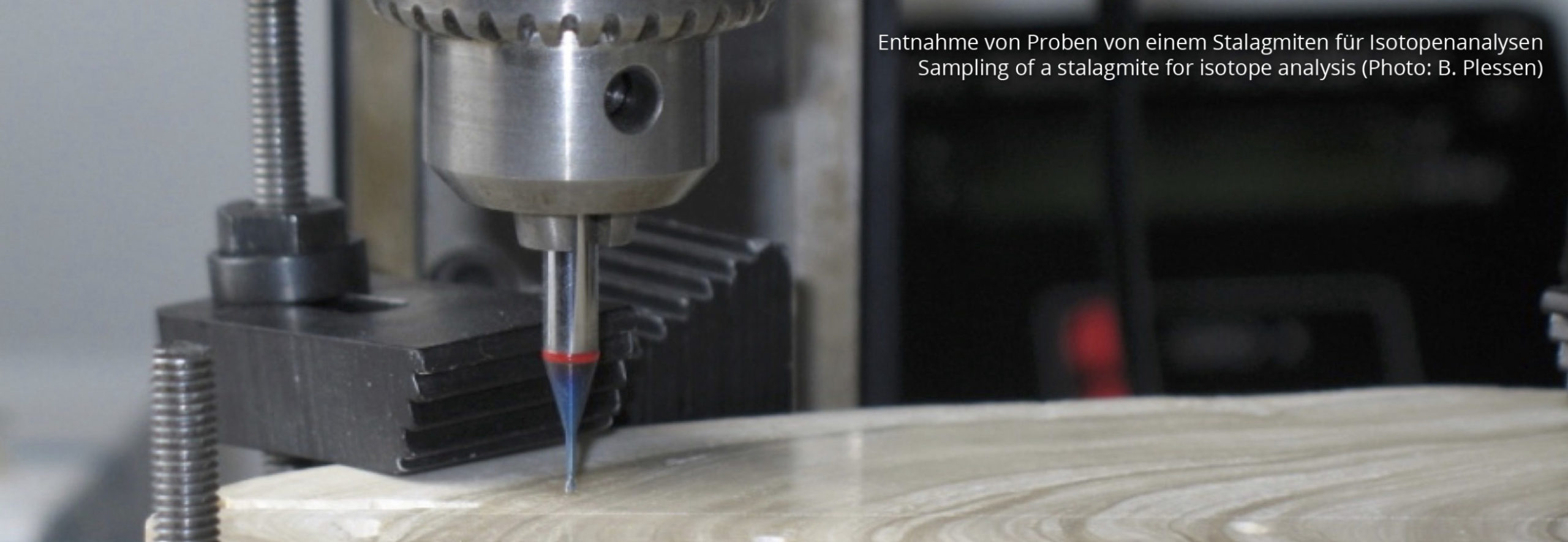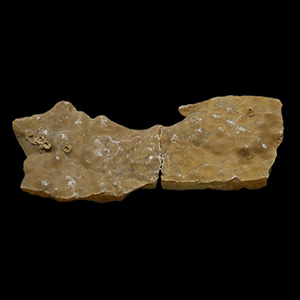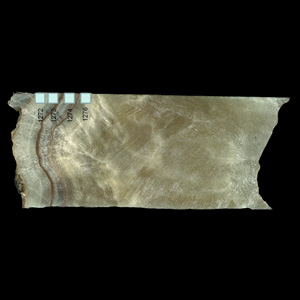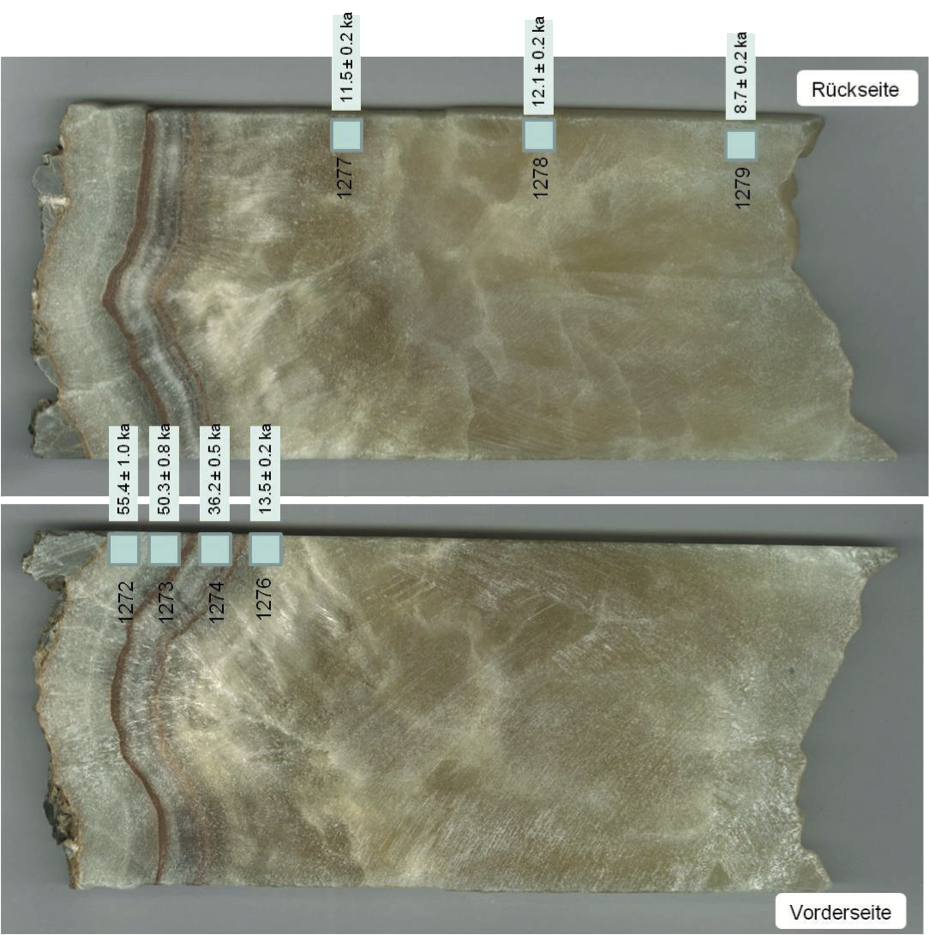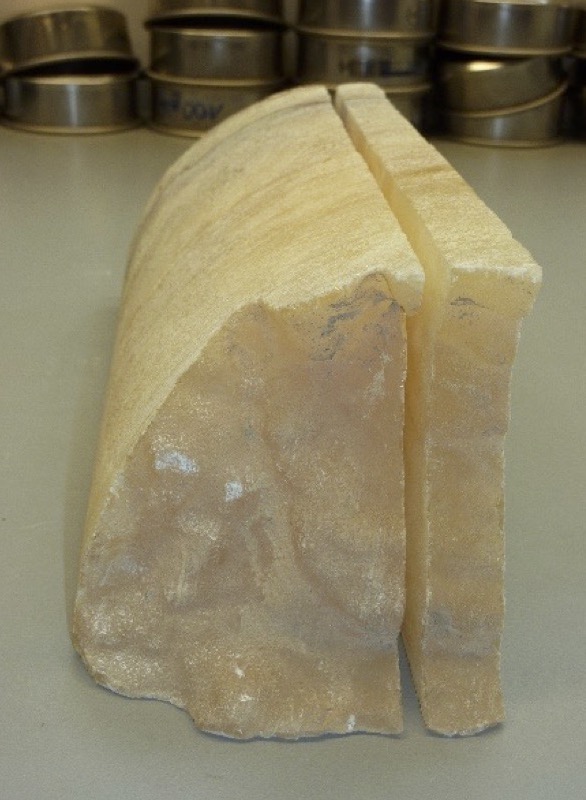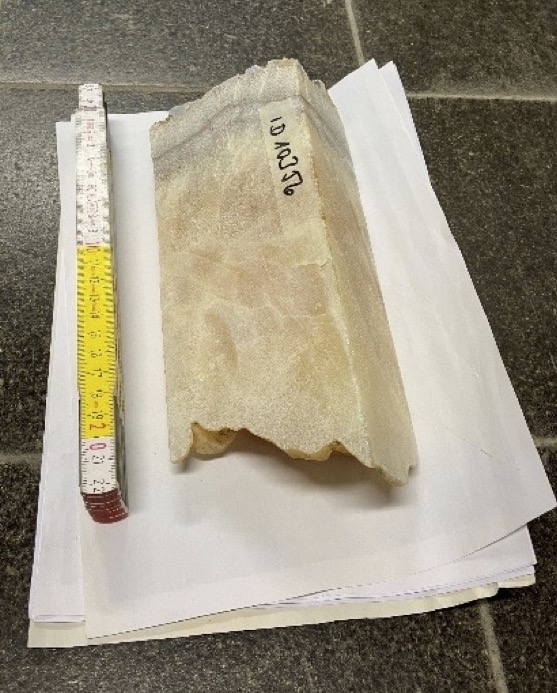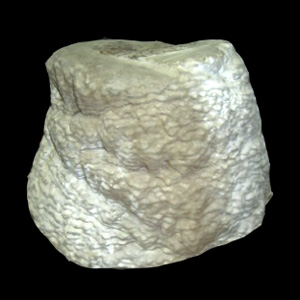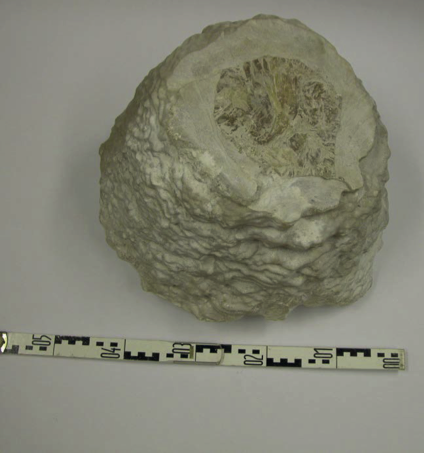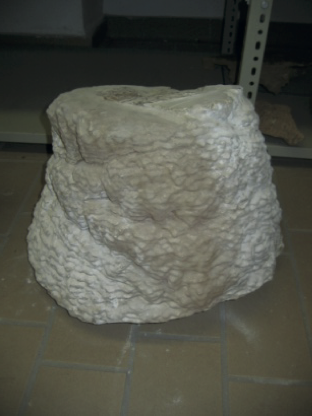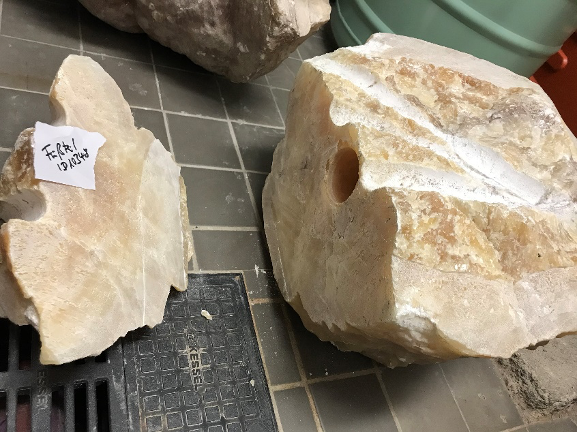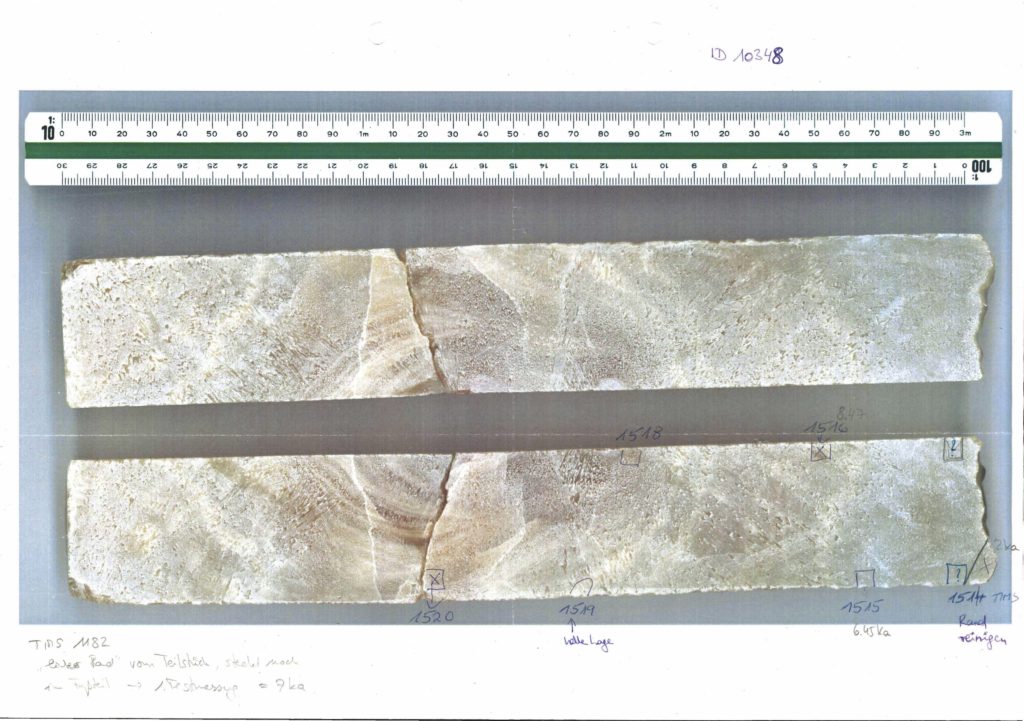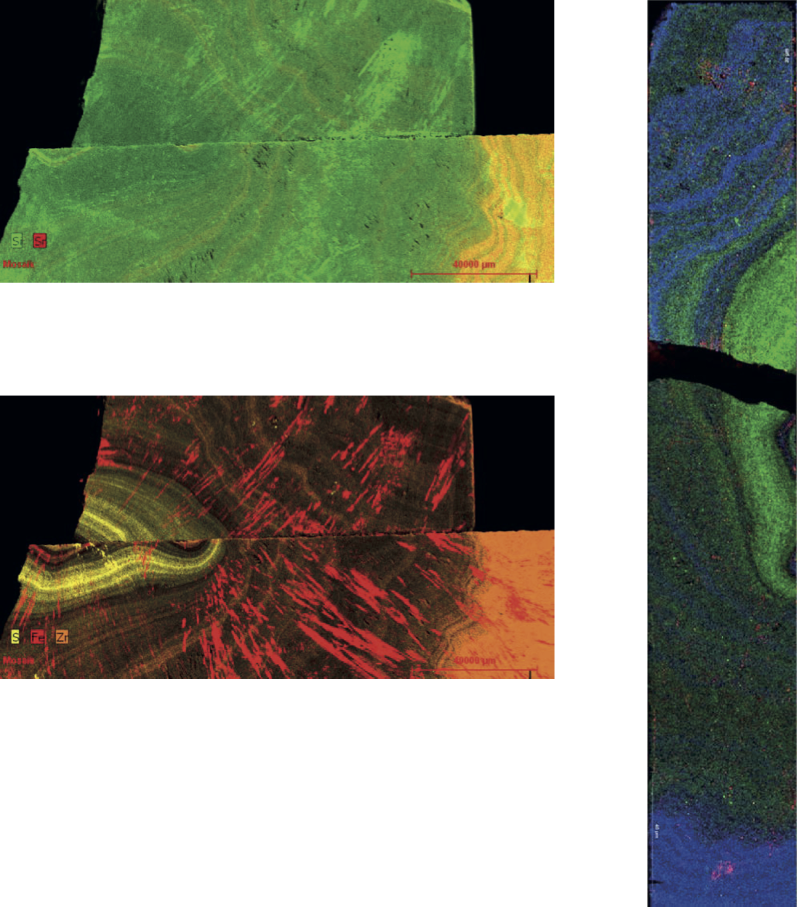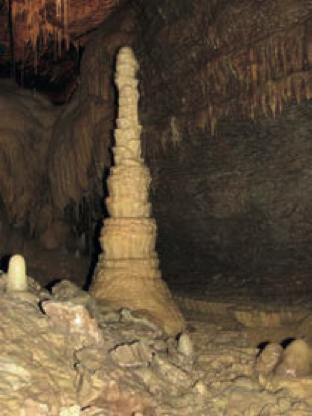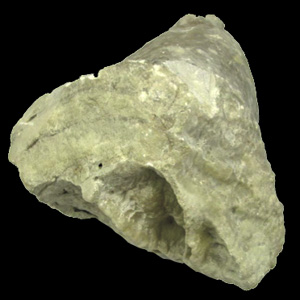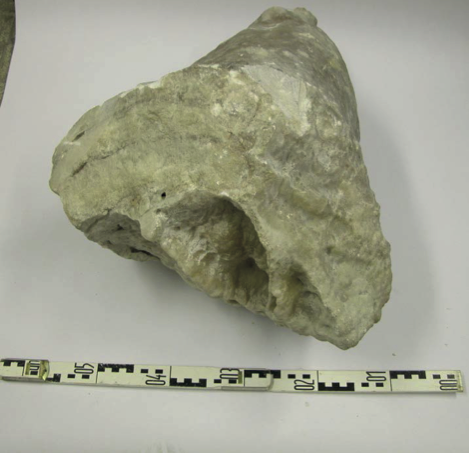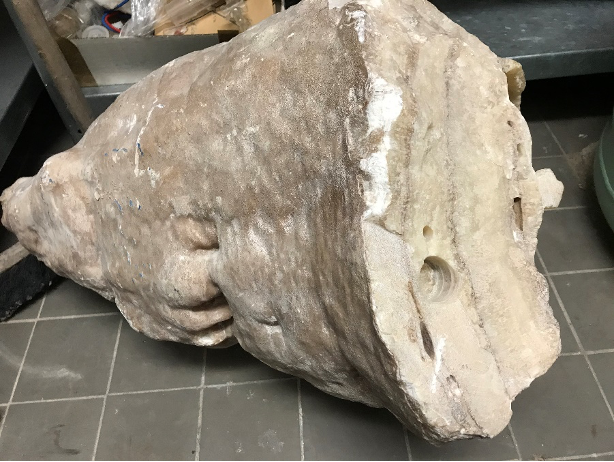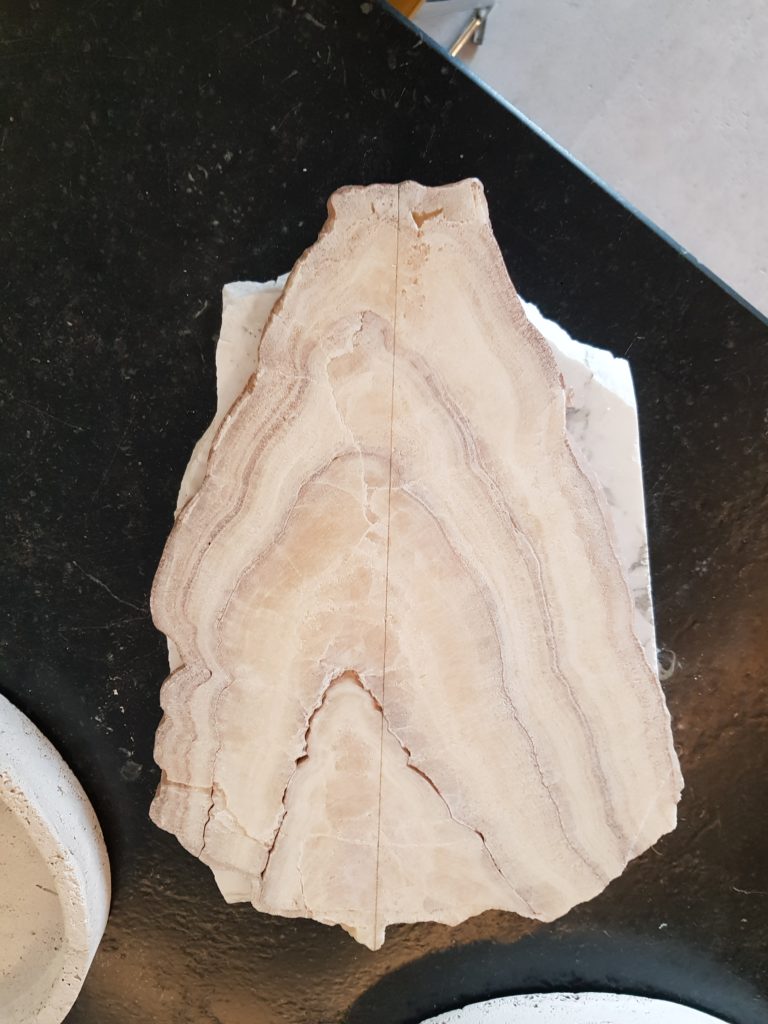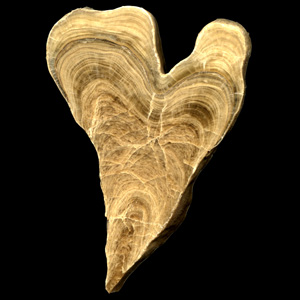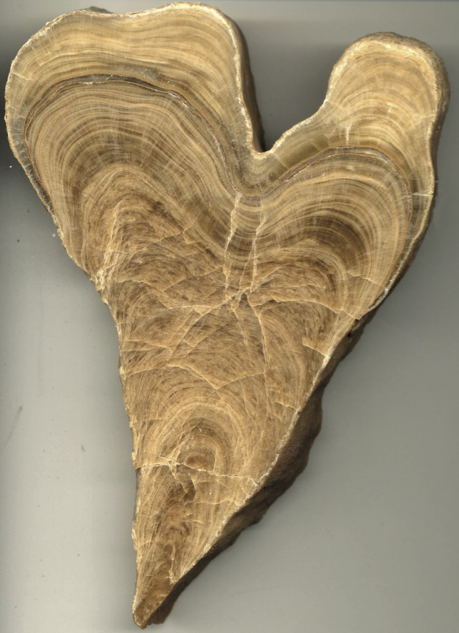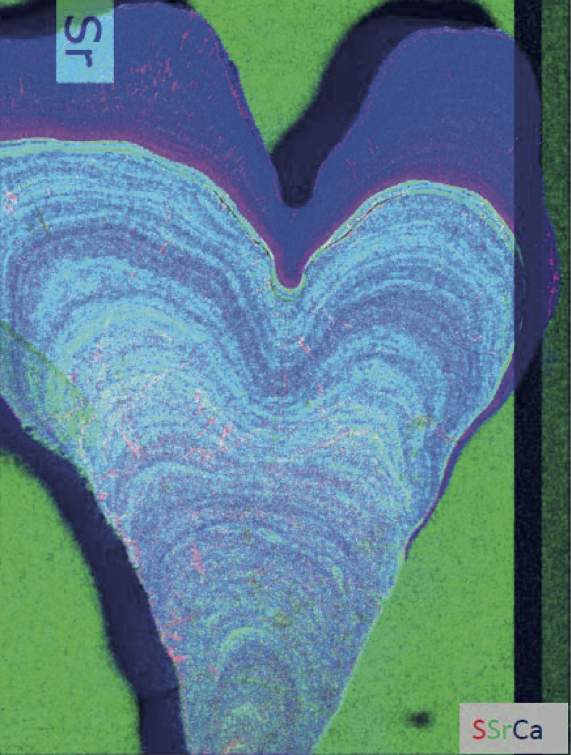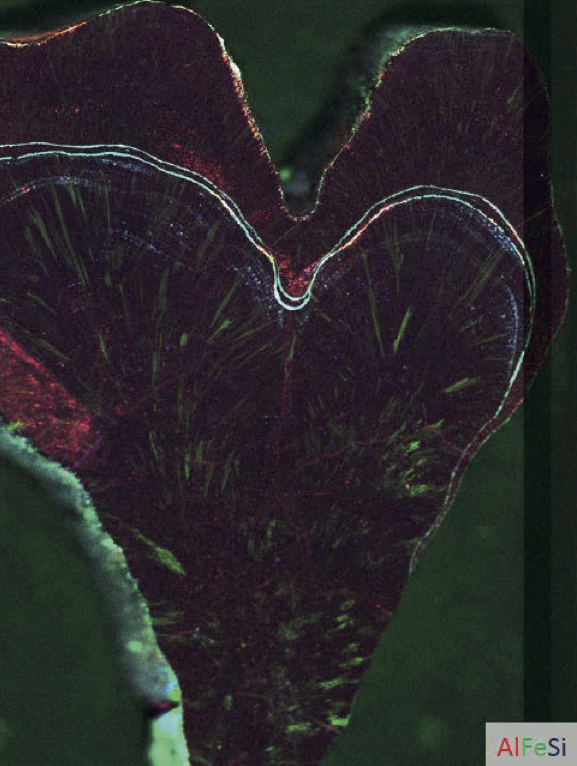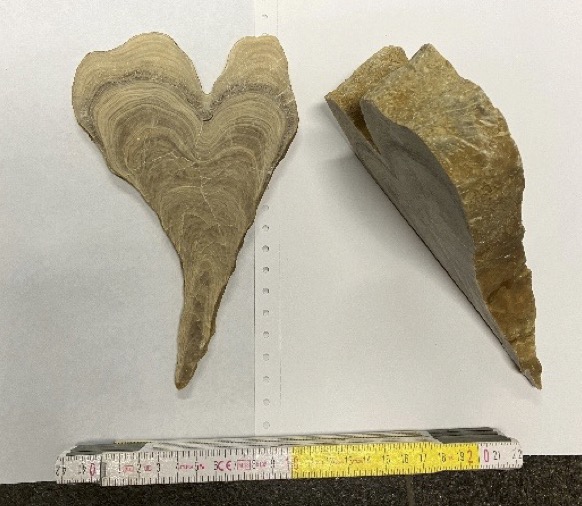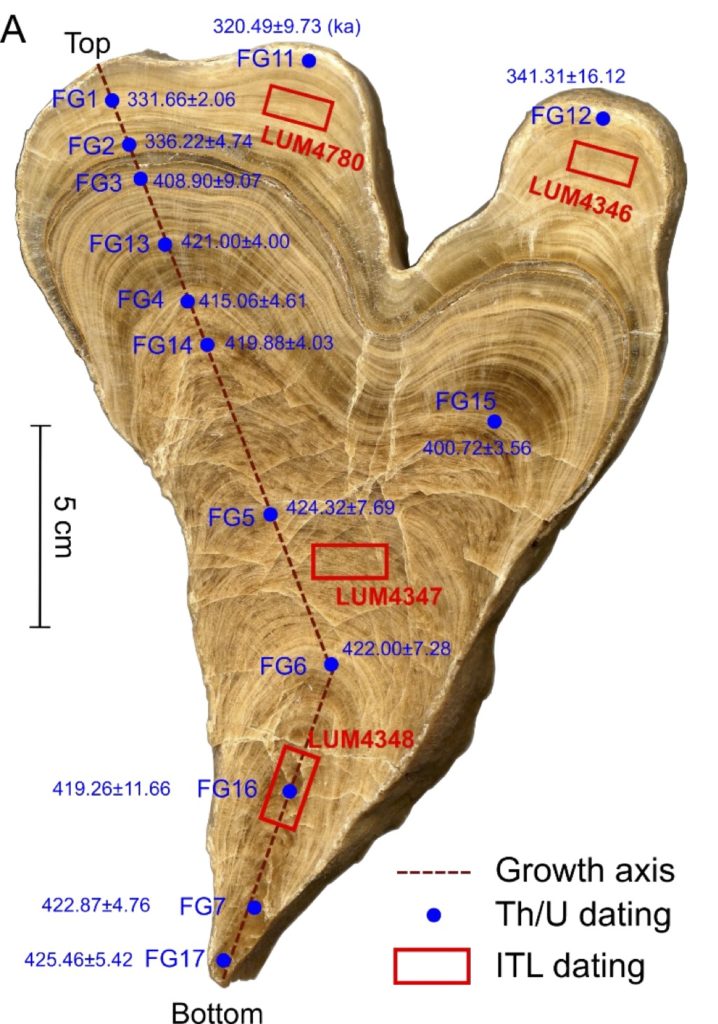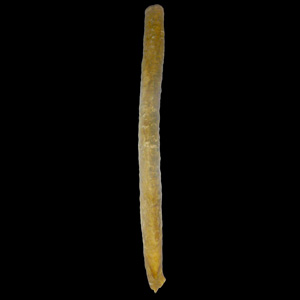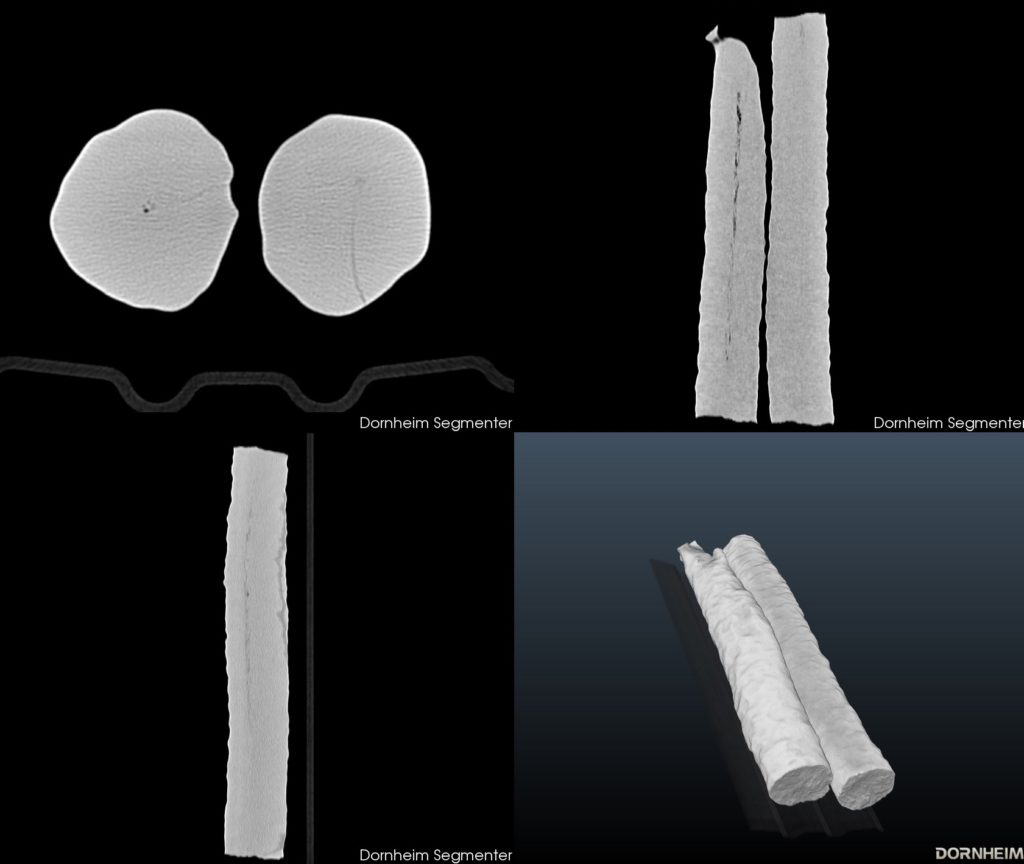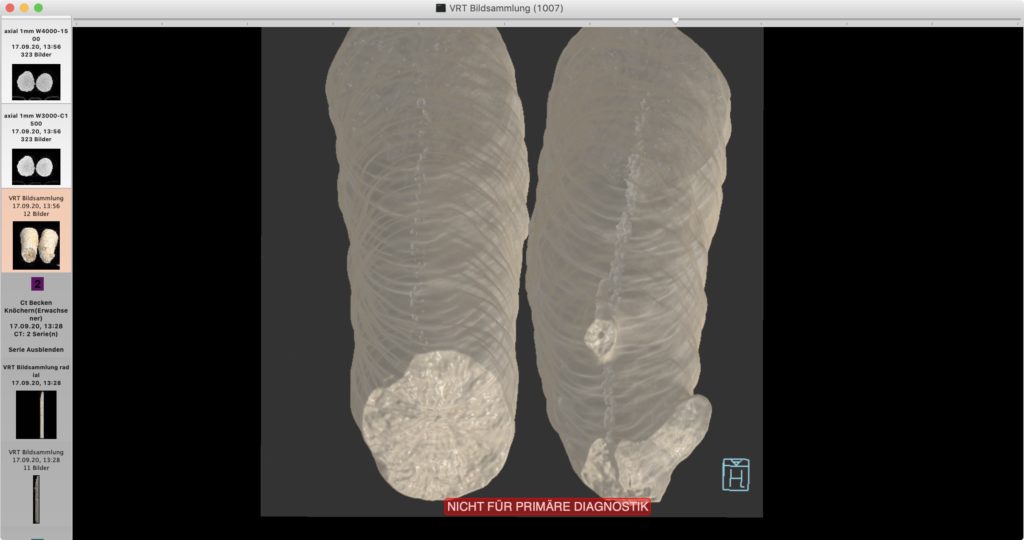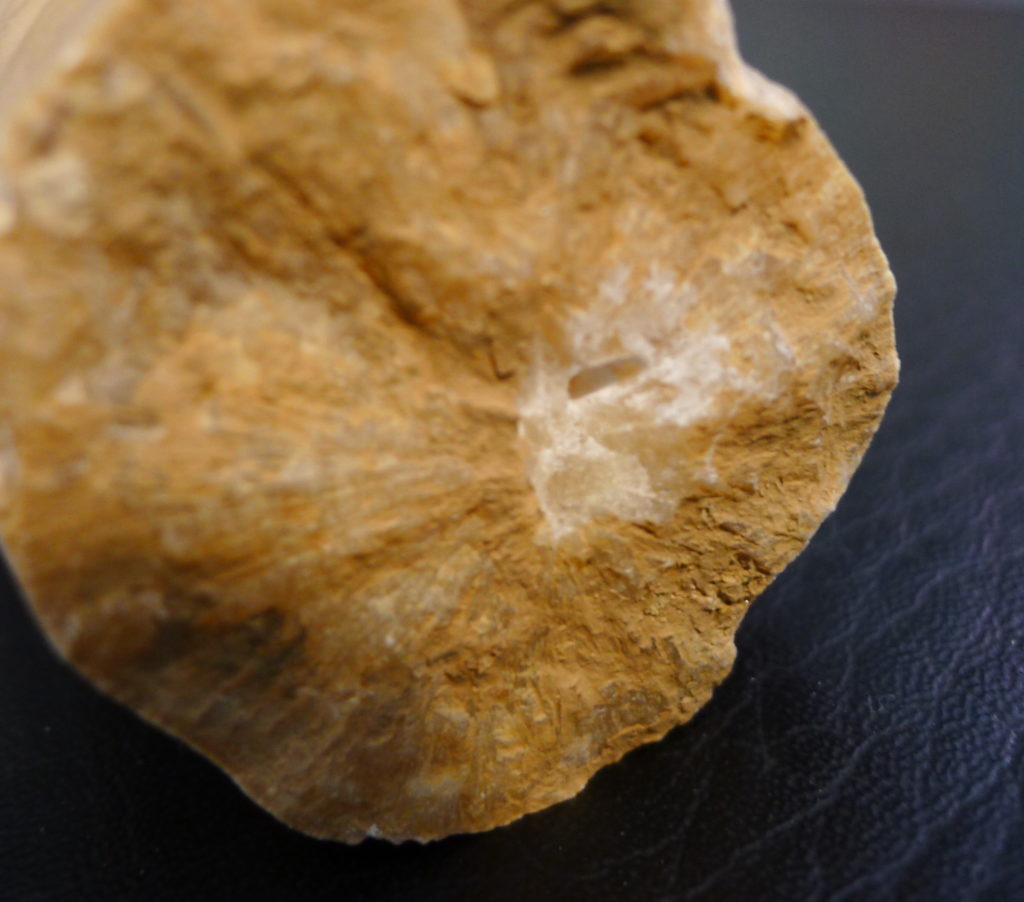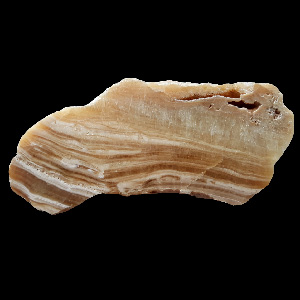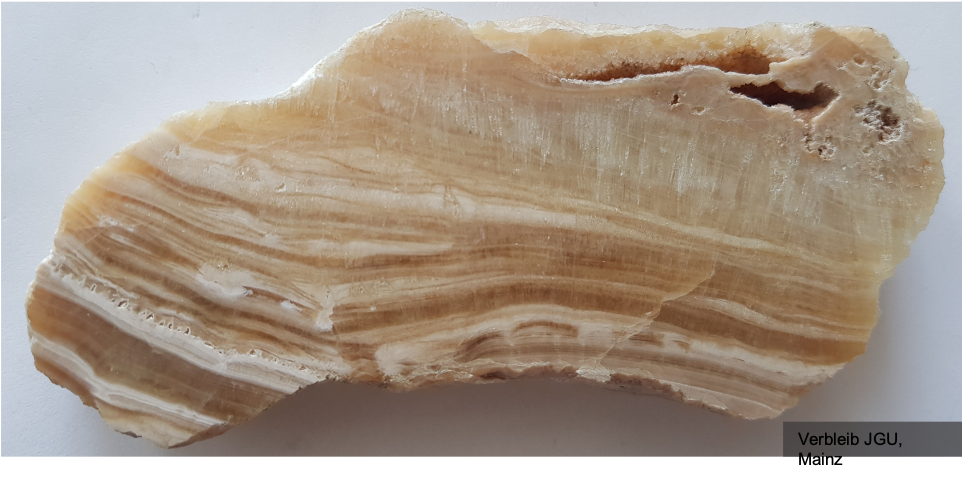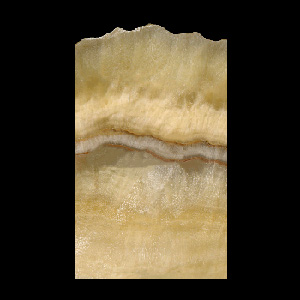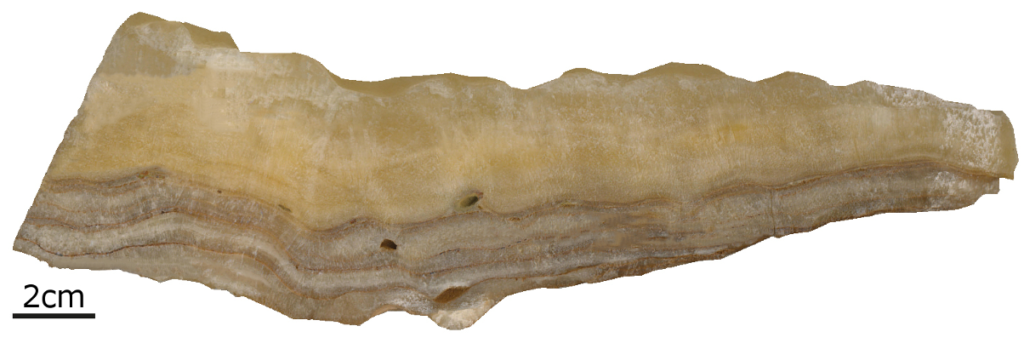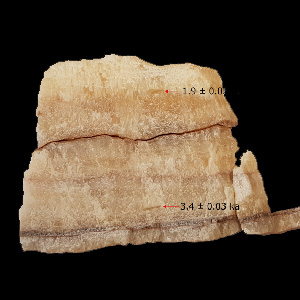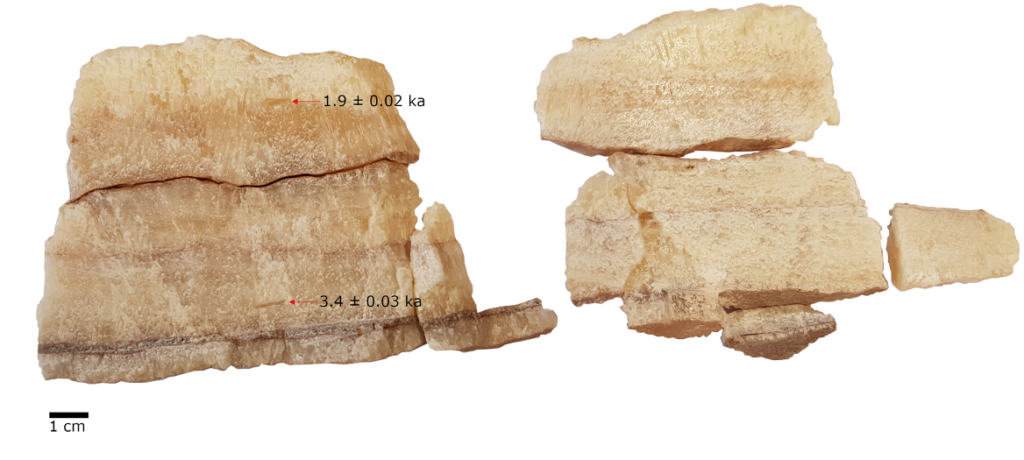@proceedings{klose2023poster,
title = {Timing of Dansgaard-Oeschger events in Central Europe based on three precisely dated speleothems from Bleßberg Cave, Germany},
author = {J. Klose and D. Scholz and M. Weber and H. Vonhof and B. Plessen and S. Breitenbach and N. Marwan},
editor = {Summer School on Speleothem Sciences 2023, Sao Paulo},
url = {https://bbh.pik-potsdam.de/wp-content/uploads/2024/09/klose_SummerschoolSaoPaulo2023.pdf},
year = {2023},
date = {2023-08-07},
urldate = {2023-08-07},
abstract = {The last glacial period and especially Marine Isotope stage 3 (MIS 3, ca. 57 - 27 ka) was characterized by various climate oscillations (i.e., rapid increases in temperature, followed by a gradual cooling, the Dansgaard-Oeschger (D/O) events), which were first discovered in Greenland ice cores. Although their causes are still not fully understood, clear evidence for their supra-regional character was found in various climate records around the globe. However, European speleothem samples, which grew during MIS 3, are limited and mainly restricted to alpine regions, where glacier meltwater enabled speleothem growth, and to south/south-western parts of Europe characterised by a generally warmer climate. This led to the opinion that it was too cold and/or too dry in central Europe for speleothem growth. Here we present three speleothem (flowstone) records from Bleßberg Cave, Germany, which grew during MIS 3.
All flowstones show episodical growth patterns with distinctive, thin growth phases. Potential contamination deriving form detrital material deposited during hiatuses between individual growth phases, open-system behaviour around the hiatuses and the limited thickness of the growth layers are the biggest challenges during sampling for 230Th/U dating. By combination of different sampling techniques (i.e., laser ablation and micro-milling) in addition to the common approach of handheld drilling and due to the relatively high 238U concentration of the samples (approx. 0.4 – 1 µg/g), we were able to date even the thinnest growth layers (< 2 mm) of the Bleßberg flowstones with a very high precision (i.e., with 2σ-age uncertainties of a few hundred years or even lower).
The timing of the growth phases of the Bleßberg flowstones correlates with several D/O events recorded in the Greenland ice cores. This proves that at least some phases of MIS 3 had favourable climate conditions for speleothem growth in Central Europe. In addition, the analysis of the stable oxygen and carbon isotopes (δ18O and δ13C) for all three flowstones revealed several D/O events, which have not been recorded in any other speleothem from central Europe so far. This will enhance our understanding of climate variability during MIS 3 and specific D/O events in central Europe.},
howpublished = {Poster},
note = {Summer School on Speleothem Sciences 2023, Sao Paulo},
keywords = {},
pubstate = {published},
tppubtype = {proceedings}
}
